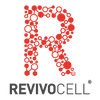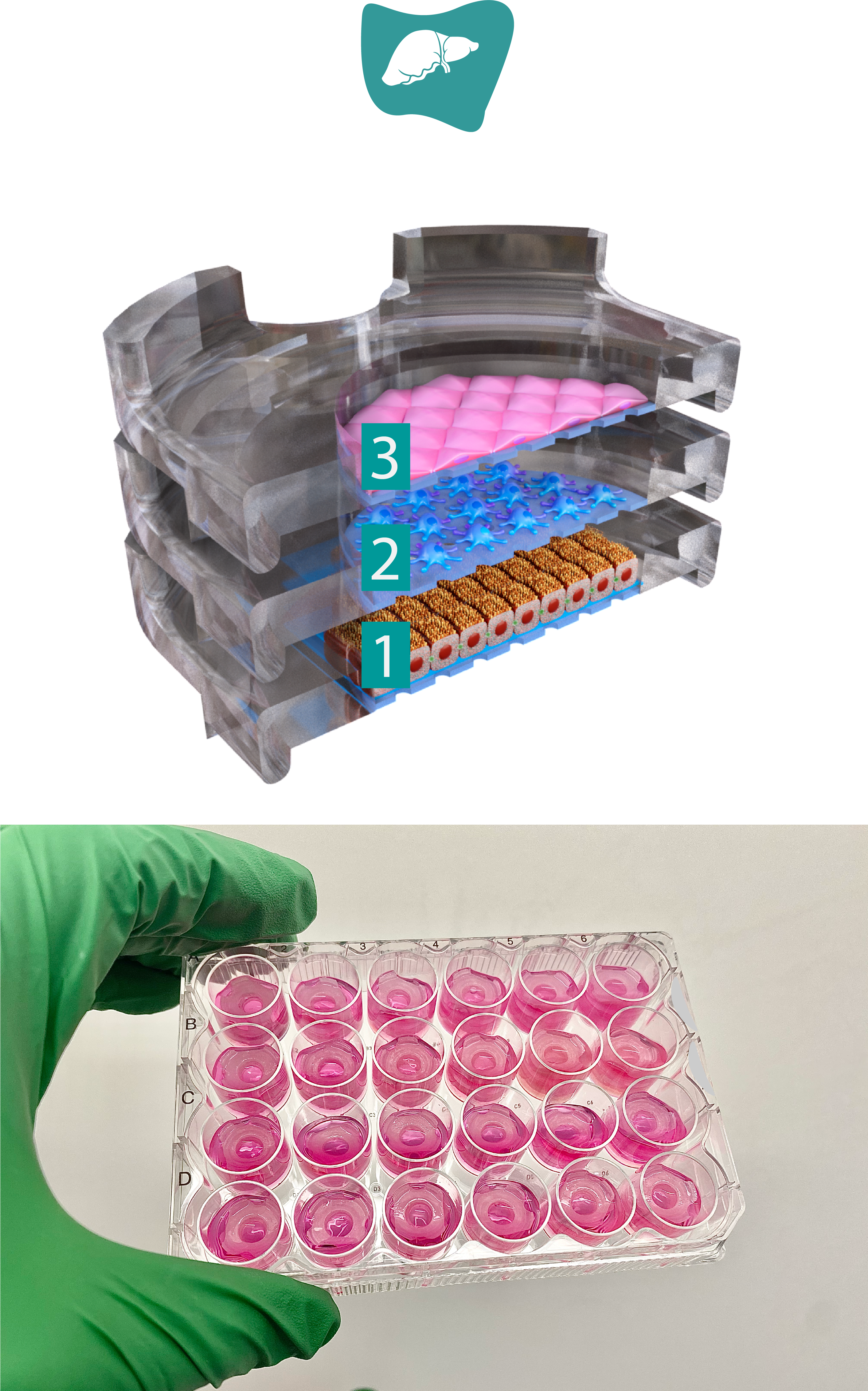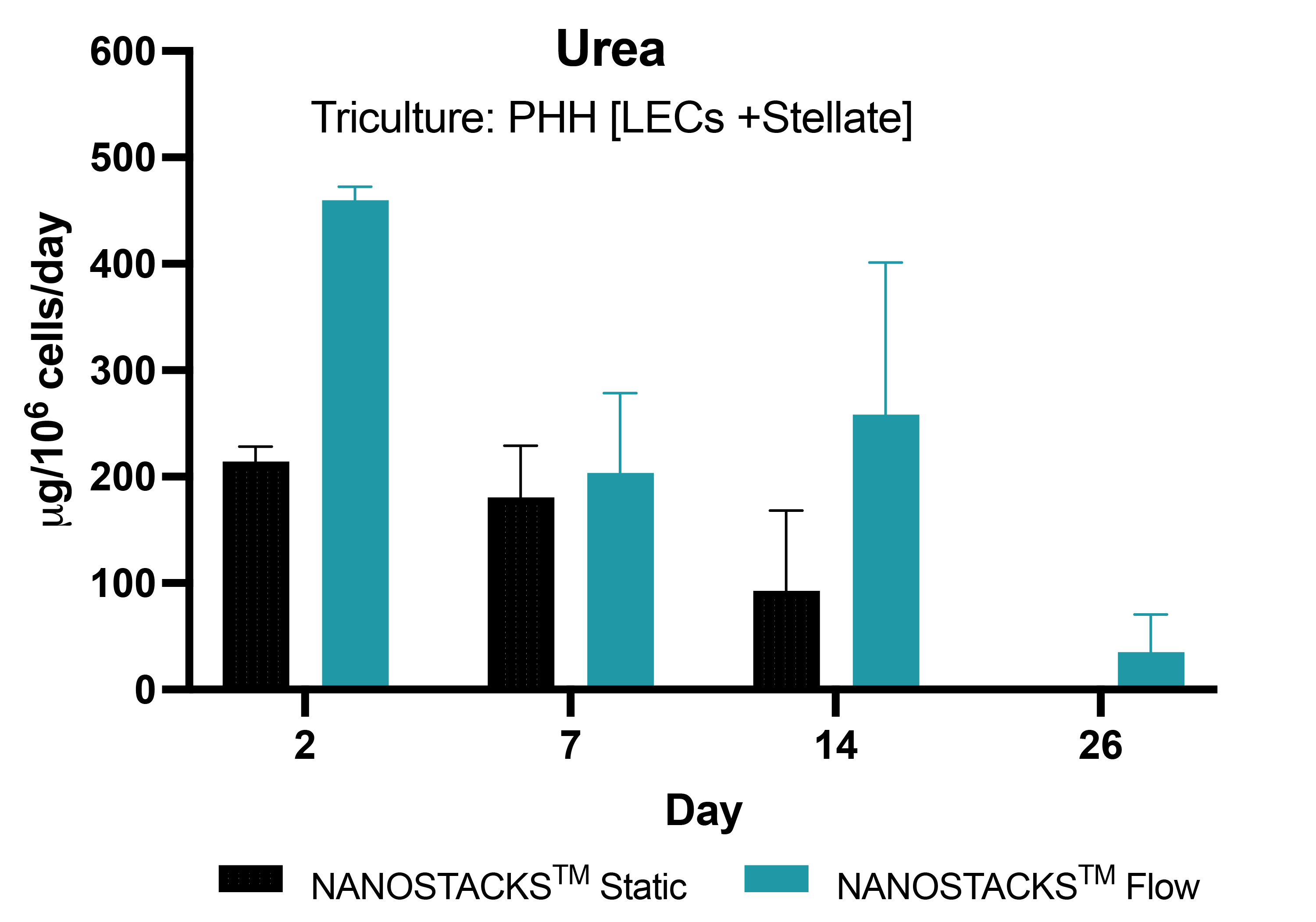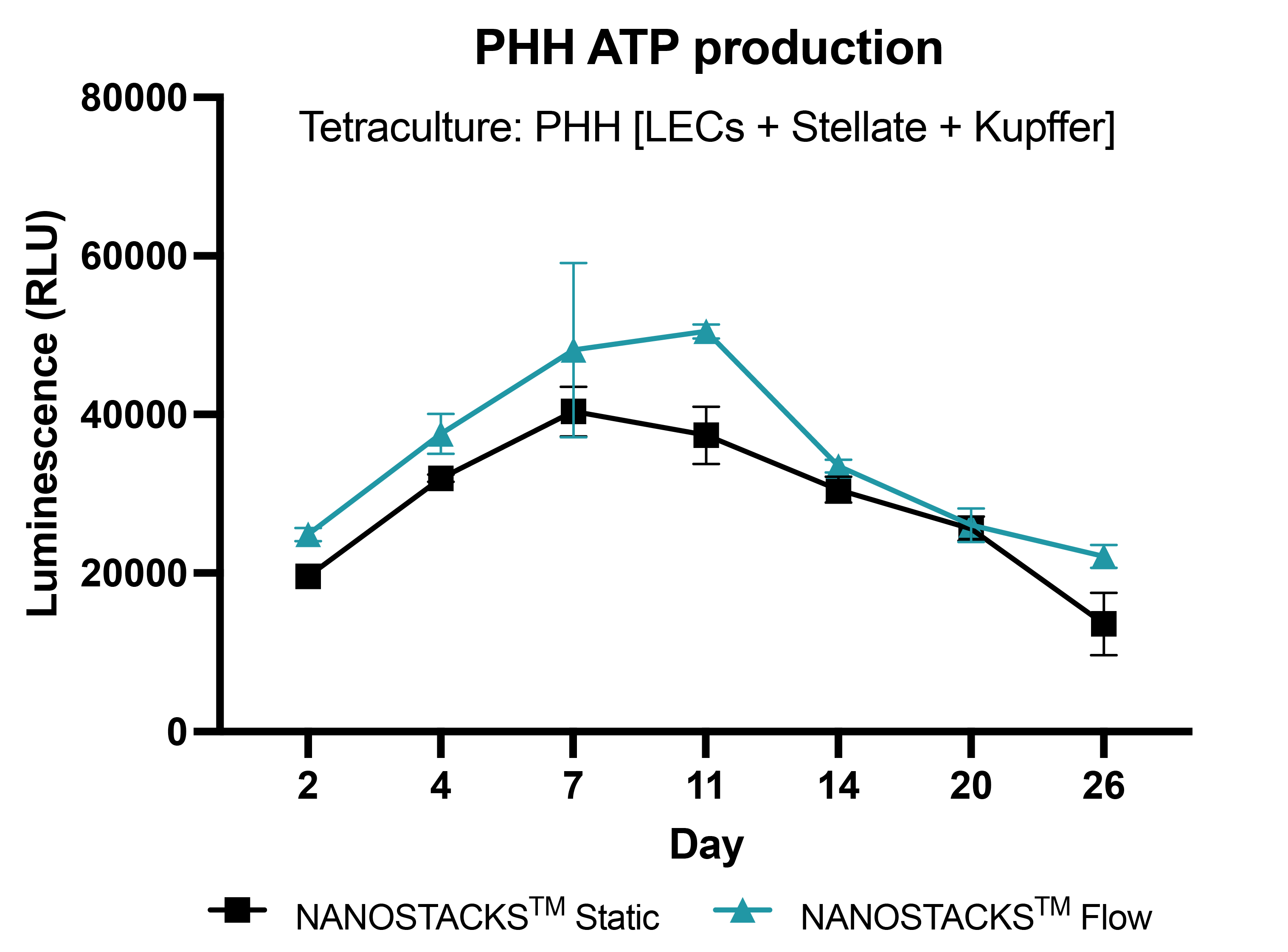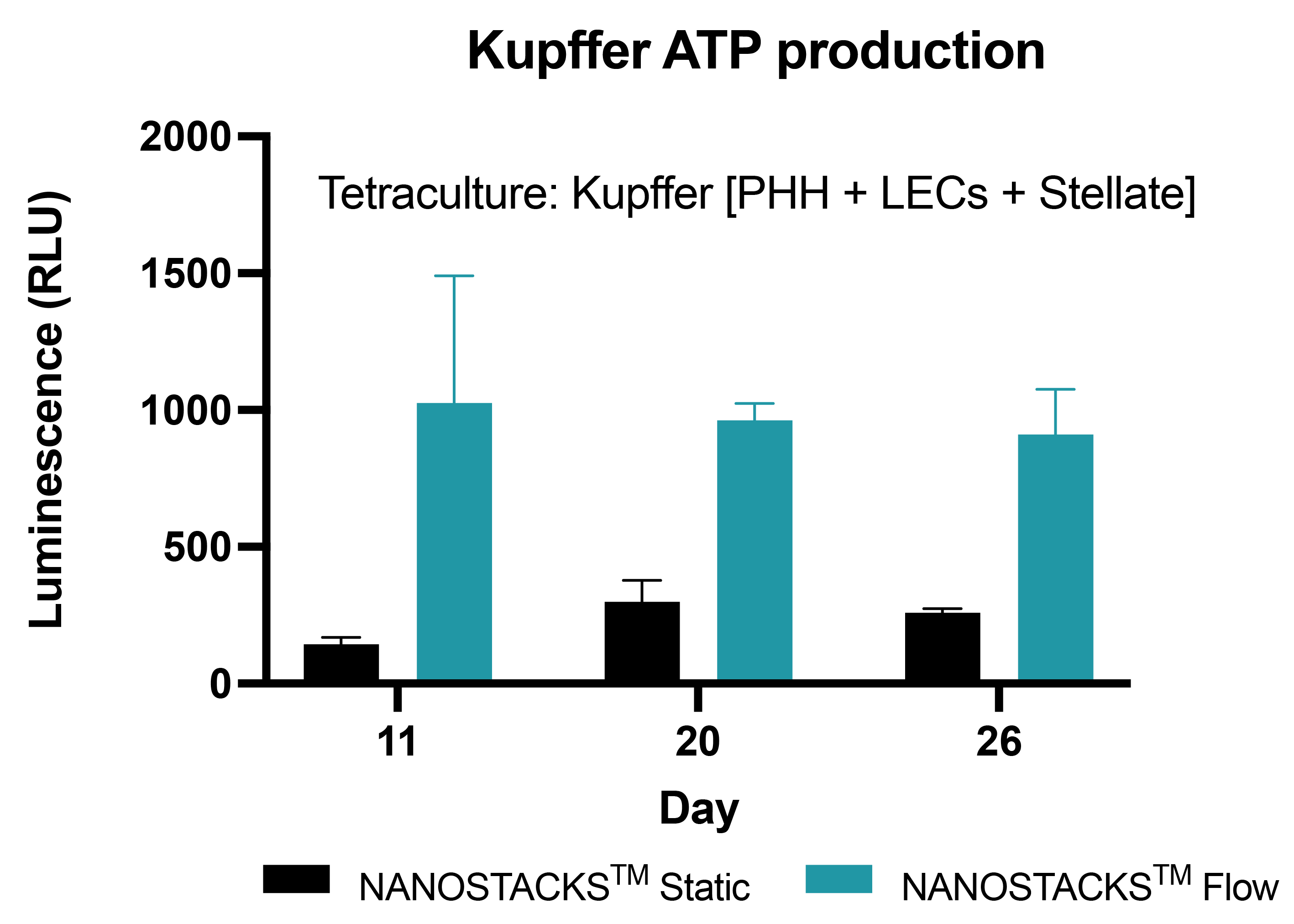Hepatotoxicity and ADME services



Why us
Our NANOSTACKSTM-based in vitro models recapitulate the cell-cell crosstalk, fluid flow and spatial cellular arrangement typical of the in vivo environment. This way, toxicity screening on our models can yield more accurate results than the use of traditional models. We provide in vitro testing services using the in vitro model of your choice.
Why choose our NANOSTACKSTM liver models
Superior performance compared to other hepatic models


Click on the options below to explore our validated solutions for hepatotoxicity and ADME studies

The model is built using our proprietary NANOSTACKS™ technology
- Layer 1: Hepatocytes compartment
- Cell type: Primary human hepatocytes
- Primary human hepatocytes (PHH) are the gold standard for hepatotoxicity screening due to their physiological relevance and ability to recapitulate key liver functions, such as CYP activity and albumin production. The model can be utilized in various ways, including as a standalone model or as a control for our triculture and tetraculture models.
- Fluid flow included
OUTPUTS
Contact us for alternative endpoints.
Comprehensively validated liver monoculture model
PHH monoculture model DILI screening standard process & timeline*

*Dosing intervals and duration can be adjusted based on your requirements
Publication
Multicellular hepatic in vitro models using NANOSTACKS™: human-relevant models for drug response prediction
Published in In Vitro Models (Springer Nature)
This study introduces our patented NANOSTACKS™ technology as a novel platform for building advanced liver models to predict drug-induced liver injury (DILI) — a major cause of drug failure in clinical trials.Key highlights:
• Developed and validated monoculture, triculture, and tetraculture liver models using primary human hepatocytes (PHH) and non-parenchymal cells.
• Demonstrated long-term liver functionality (albumin, urea, CYP3A4, ATP) up to 31 days.
• Included orbital-induced fluid mixing to mimic in vivo-like shear stress and improve performance. • Showed improved resistance to hepatotoxic drugs in multicellular models vs. monocultures.
• Enabled cell-type specific toxicity analysis, advancing precision in safety screening.These models provide human-relevant, animal-free platforms for drug screening, toxicity testing, and liver disease modeling — all in a user-friendly, 24-well plate format.

Unique Benefits
Get in Touch
Explore how our models support your research studies

Alternative solutions
Need some help?
If you're interested in discovering how our organ models can benefit your research, we invite you to get in touch with us. Our team is available to provide further insights and address any inquiries you may have.
Contact information
UK
USA
BioLabs@NYU LANGONE, 180 Varick St, Floor 6, New York, NY 10014
info@revivocell.com
Revivocell Brands


